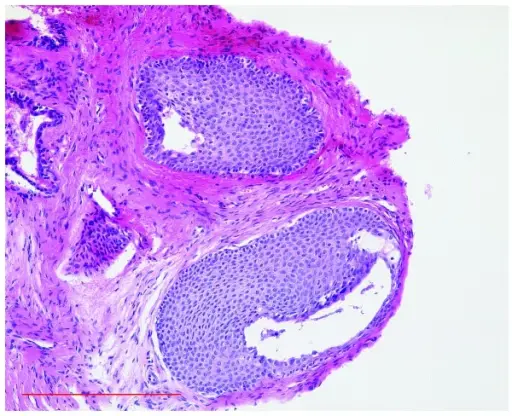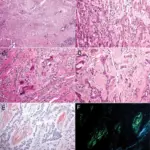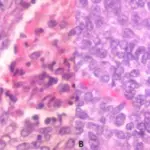Squamous odontogenic tumor is a rare, benign, locally infiltrative neoplasm of the jaws that appears to originate from the rest of Malassezia.
What is the Pathology of a Squamous Odontogenic Tumor?
The pathology of squamous odontogenic tumor is:
-Etiology: The cause of the squamous odontogenic tumor is unknown.
-Genes involved: None.
-Pathogenesis: The sequence of events that lead to the squamous odontogenic tumor is still unclear in which remnants of the dental lamina (rests of Serres), epithelial rests of Malassez, or gingival epithelium are the main suspected origin.
-Histology: The histology associated with squamous odontogenic tumor shows stratified squamous epithelium within the fibrous stroma, often well-defined nests with clear cells.
How does Squamous Odontogenic Tumor Present?
Patients with Squamous odontogenic tumors typically affect males and females present in the age range of 40-50 years. The symptoms, features, and clinical findings associated with squamous odontogenic tumor include painless, slow-growing swelling is the most common presenting sign.
How is Squamous Odontogenic Tumor Diagnosed?
Squamous odontogenic tumor is diagnosed by excisional biopsy.
How is Squamous Odontogenic Tumor Treated?
Squamous odontogenic tumor is treated by excision with the extraction of involved teeth.
What is the Prognosis of Squamous Odontogenic Tumor?
The prognosis of a squamous odontogenic tumor is good.



